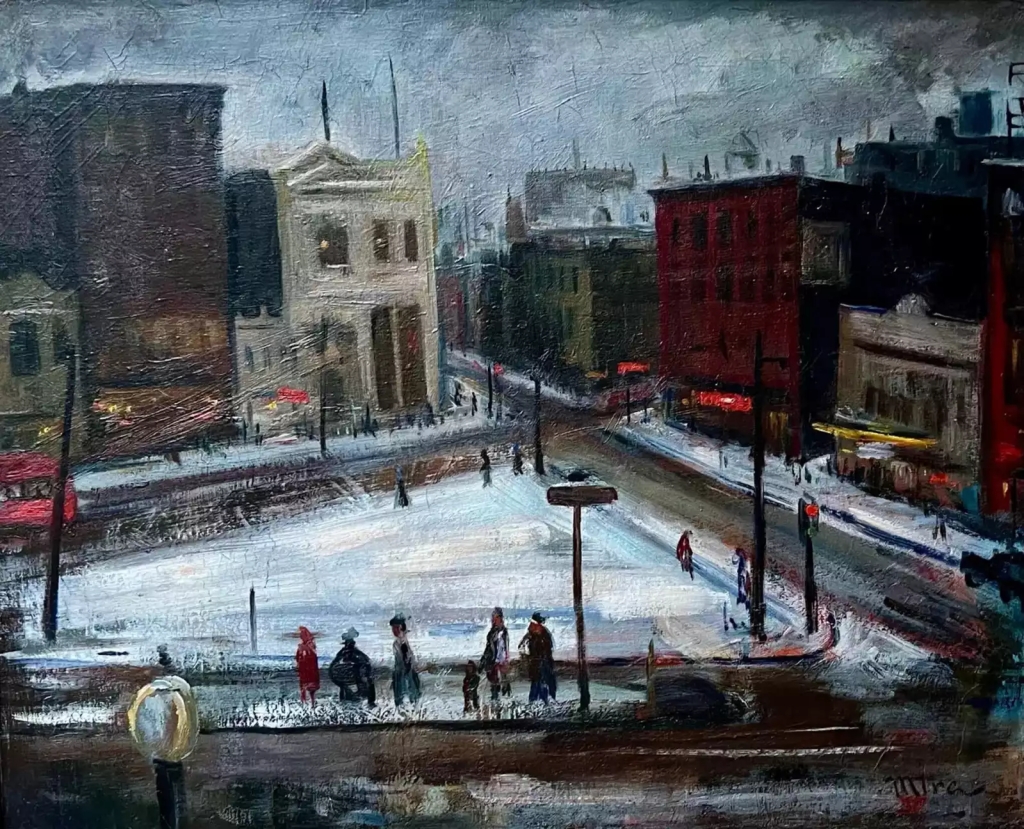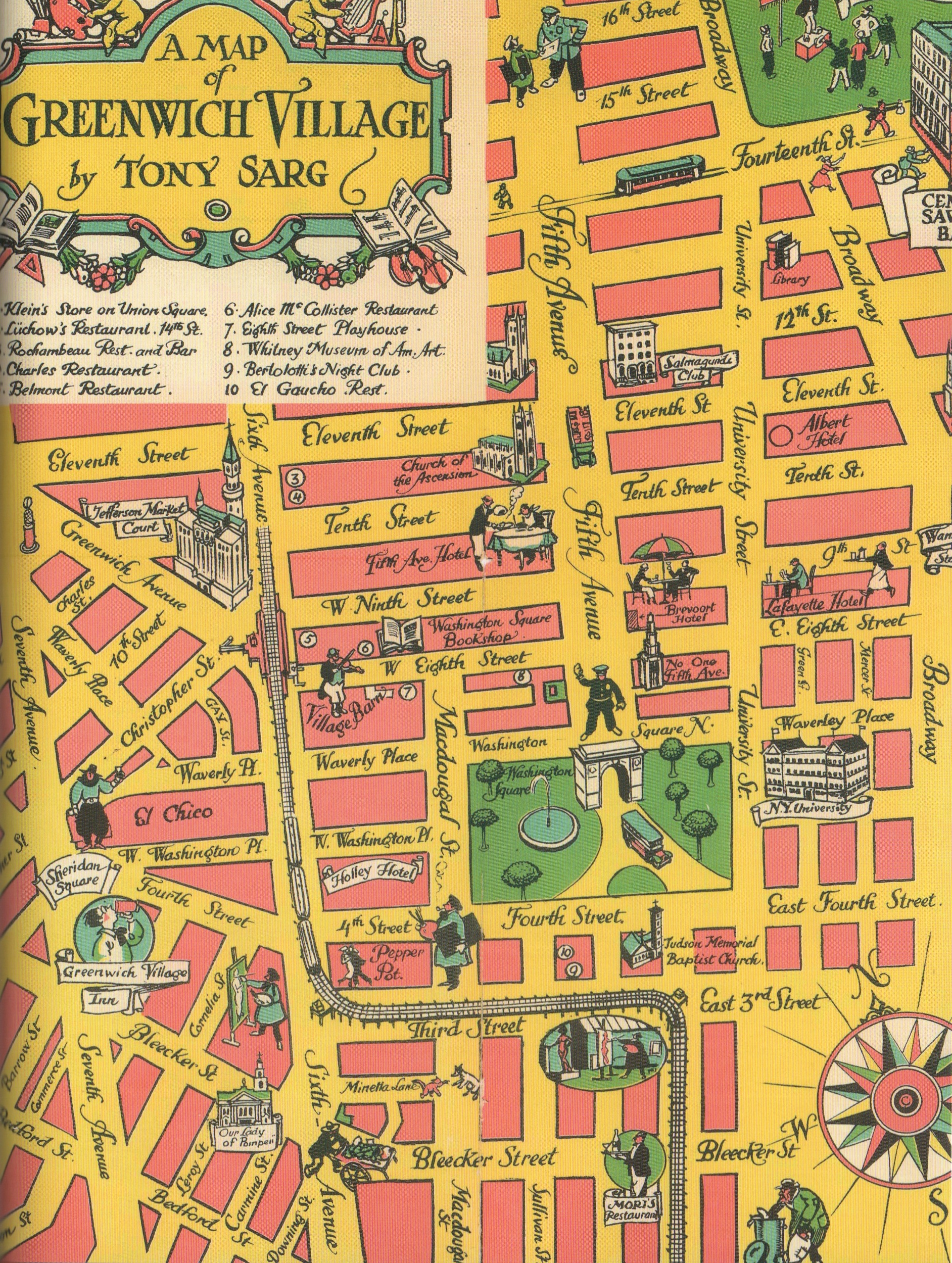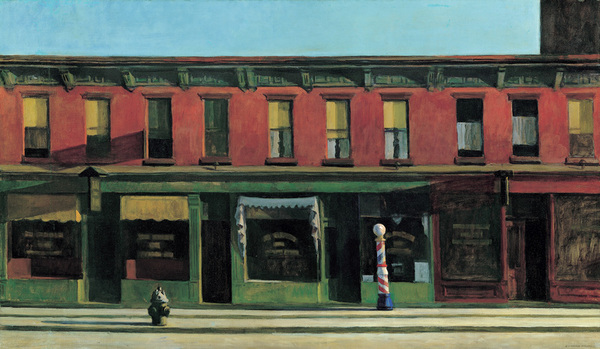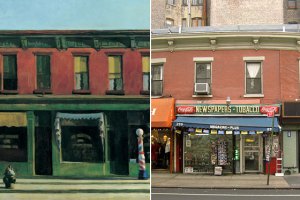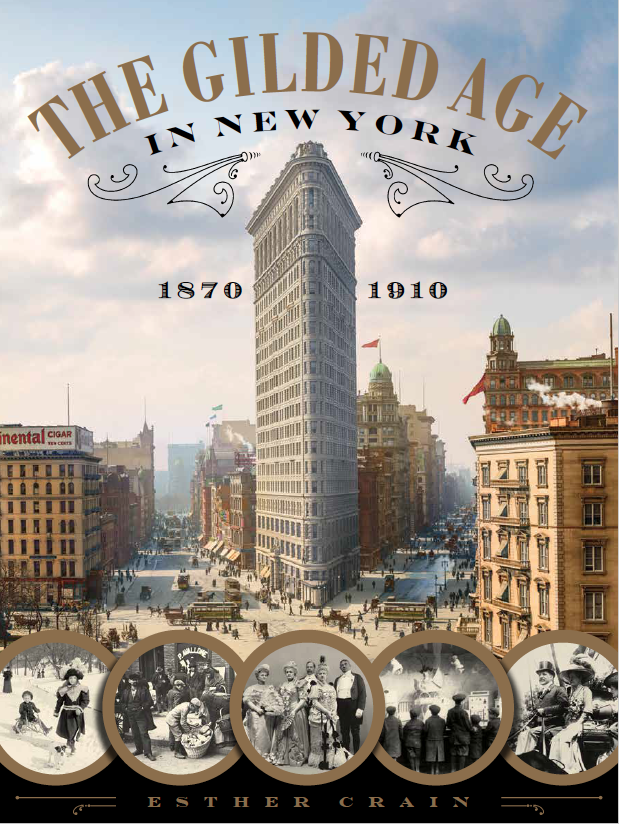I don’t usually post winter scenes during summer months. But there’s heat in this 1930s painting of a snow-covered Jackson Square Park—a block-long triangle of green space in Greenwich Village at the awkward juncture of Greenwich and Eighth Avenues and Horatio Street.
Alfred Mira is the painter, and the heat comes from him, I think. Growing up in Greenwich Village in an Italian immigrant family, Mira studied at the Art Students League and National Academy of Design. But according to a biography from Christie’s, Mira found his artistic footing during a trip to Europe when he was a young man.
“Mira was particularly fascinated with the city streets and their frenetic energy,” the site states. “After traveling throughout Europe in 1928, Mira realized that the bustling avenues of New York afforded him the profound inspiration he was attempting to find in Europe. Returning to New York, Mira devoted himself to painting its streets, avenues and squares.”
If this really is Jackson Square in the 1930s, things seem a little askew. A 1920s apartment house should be on the right side of the painting between Greenwich and Horatio; Jackson Square itself seems way out of proportion. And shouldn’t there be cars on these roads?
But no matter. It’s a romantic depiction of a piece of Greenwich Village with passion and energy, from the rich colors of the tenements to the faceless people in motion to the neon store signs glowing like embers.
For more Alfred Mira paintings, click this link.
